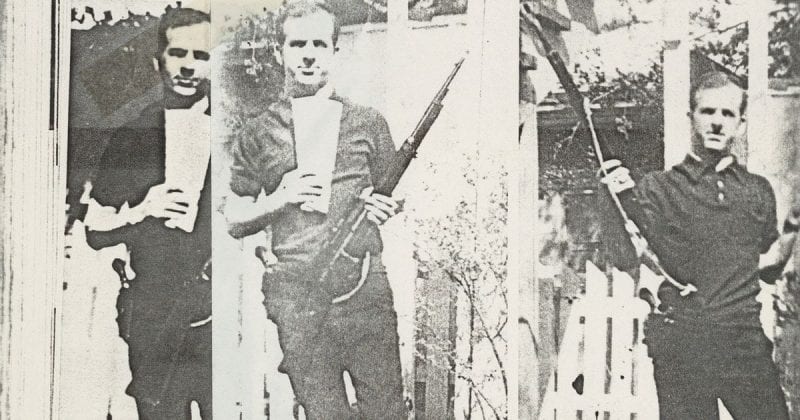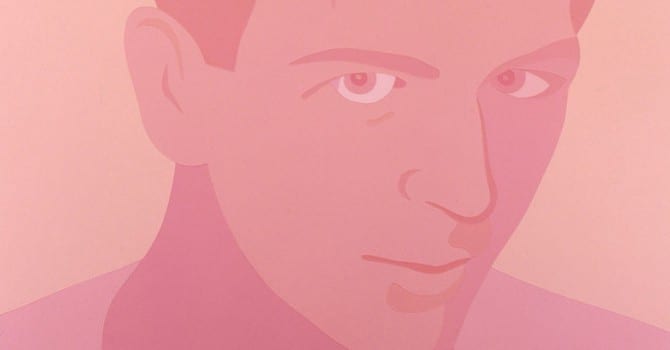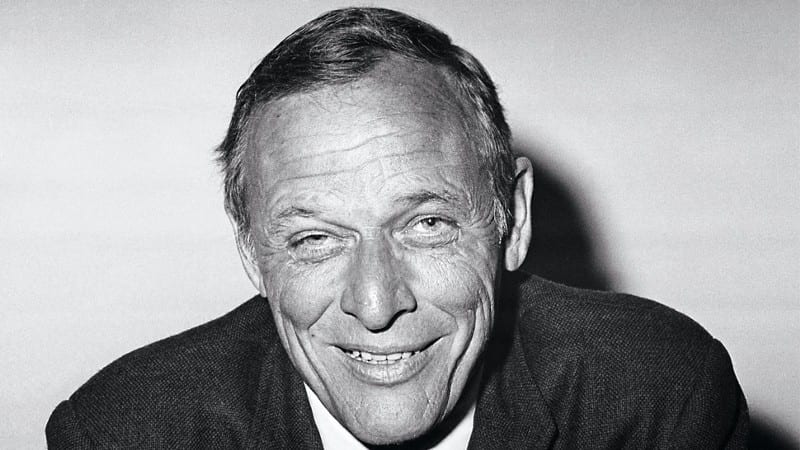In Defense of ‘Conspiracy Theories’
From “Fake News” to the Art World.
“To remain innocent may also be to remain ignorant.”
― John Berger, Ways of Seeing
[dropcap]T[/dropcap]his November 22nd marked fifty-five years since the assassination of John F. Kennedy. Perhaps no other major incident in U.S. history has generated more uncertainty and skepticism towards its official account than his Dallas killing in 1963. A 2013 Gallup poll showed that a clear majority of Americans still doubt the Warren Commission’s determination that Lee Harvey Oswald acted alone as the accused sniper, with many suspecting that others in government and organized crime were involved in a secret plot to kill the president. Although its etymological origins can be traced back further, as a cultural phenomenon the notion of belief in so-called ‘conspiracy theories’ is widely attributed to a surge in distrust of government and media institutions that followed JFK’s murder. Perhaps its only rival would be September 11th, which surveys have similarly indicated a trend of doubt towards the 9/11 Commission Report’s version of events leading up to the attacks in 2001. In other words, most people believe in a major conspiracy theory — yet they generally remain a mark of disgrace and public ridicule.
At no point in time have conspiracy theories been as stigmatized as in the wake of the 2016 U.S. election. Incidentally, what is classified as such is no longer consigned to the societal fringe or ever been more popular. It is alleged that the spreading of “fake news” on social media, featuring debunked viral conspiracies like Pizzagate, was what tipped the voting scales in Donald Trump’s favor. Or was it the very real conspiracy revealed in leaked emails published by WikiLeaks that the Democratic National Committee rigged the party primary for Hillary Clinton? We’re supposed to consider that fake news too, apparently. Regardless, what is consistently never addressed is the reasons why people turn to unofficial narratives because it would require the media to address its own negligence to hold those in power to account.
An examination of the media‘s systemic failure would draw attention to its actual role in society as a tool of mass persuasion on behalf of the ruling elite. Perhaps if the official doctrines of the over-staged Warren and 9/11 Commission Reports were not treated as articles of faith, people wouldn’t be suspicious of a rogue shadow government hidden behind such obvious dog-and-pony shows. If there is no incriminating evidence in the JFK files, why on earth is the public forbidden to see them half a century later? Instead, it is the working class who are demonized for expressing the human need to grasp the social totality denied by a corporate-controlled media that performs the opposite of its expected function. They are left with no choice but to fill in the enormous blanks left gaping by a press in service of the status quo and a government with no transparency. It is always the people who are blamed for the media’s failure to do its job.
The same can be said across the pond or for the West in general. Look no further than a recent article in British newspaper The Guardian alleging that “60% of Britons believe in conspiracy theories.” Its definition of ‘conspiracy’ is so broad that it doesn’t simply refer to beliefs about UFOs or the moon landing, but a general distrust of institutions, official narratives and authority figures in any form. The article then conflates Brexit voters who hold anti-immigrant views with anyone polled who believes that “the world is run by a secret global cabal of people who control events together”, and then almost comically states “the most widespread conspiracy belief in the UK, shared by 44% of people, was that ‘even though we live in what’s called a democracy, a few people will always run things in this country anyway.’” That is to say, The Guardian regards a view generally held by most rational people with an accurate understanding of life under capitalism as a ‘conspiracy’ belief equivalent to racism. The article even concludes that “distrust of company bosses”, a feeling unsurprisingly held by three-fourths of those surveyed, falls under the label of a conspiracy view. Yes, clearly anyone who doesn’t love their oppressors is in equal standing with bigots who want to leave the EU. The world’s self declared ‘leading liberal voice’ is a guardian of power, indeed.
The term ‘conspiracy theory’ itself is a weapon. Its use is so ubiquitous that it automatically implies unconvincing improbability and worthiness of dismissal. How and when did it come to be so widely dispersed in the cultural lexicon? In the 1970s, the CIA had been the subject of numerous scandals with disclosures about its activities ranging from meddling in the affairs of sovereign countries to administering mind-control experiments on citizens in MK-ULTRA. The revelations about its clandestine influence on the press was yet another divulgence. It turns out that a likely possibility for the genesis of the phrase ‘conspiracy theory’ and its far-reaching dissemination was revealed in an important 1976 Freedom of Information Act (FOIA) request by The New York Times in CIA Document 1035–960. The dispatch showed that by the late 1960s, the spy agency was so worried about pervasive skepticism toward the Warren Commission ruling that it issued a bulletin to its elite liaisons in the press to quell subversion. Entitled “Concerning Criticism of the Warren Report”, the communique encouraged the fourth estate to discredit doubters by spreading propaganda. It specifically employed the term while stressing the need to rein in dissenting opinion among journalists and the public:
“Just because of the standing of the Commissioners, efforts to impugn their rectitude and wisdom tend to cast doubt on the whole leadership of American society. Moreover, there seems to be an increasing tendency to hint that President Johnson himself, as the one person who might be said to have benefited, was in some way responsible for the assassination. Innuendo of such seriousness affects not only the individual concerned, but also the whole reputation of the American government. Our organization itself is directly involved: among other facts, we contributed information to the investigation. Conspiracy theories have frequently thrown suspicion on our organization, for example by falsely alleging that Lee Harvey Oswald worked for us. The aim of this dispatch is to provide material countering and discrediting the claims of the conspiracy theorists, so as to inhibit the circulation of such claims in other countries.”
Whether or not the specific document’s usage of the label is directly attributable to its subsequent omnipresence in the cultural vocabulary is beside the point. It was yet another example of the CIA’s efforts to engineer public opinion with media bias and disinformation, ordering its recruits to “employ propaganda assets to [negate] and refute the attacks of the critics. Book reviews and feature articles are particularly appropriate for this purpose.” Only on occasion does an event like the Kennedy assassination occur where the deep state’s savage nature is glimpsed by the public at large, if only for a brief moment. Such instances require a counterintelligence response if the majority is to stay plugged into the matrix.
The unpleasant truth is that the 35th U.S. President became so despised by the most right-wing and militarist elements in the intelligence apparatus — provoked by his perceived treachery in diplomacy toward Cuba and placation of the Soviet Union following the foreign policy disasters of the Cuban Missile Crisis and Bay of Pigs and apparent desire to deescalate the war in Vietnam — that they most likely removed him in a coup. The extent to which Kennedy was sincere in those efforts is another matter, although it was confirmed in declassified documents last year that he had rejected the proposed Operation Northwoods which would have carried out ‘false flag’ bombings in Miami to be blamed on Fidel Castro which shockingly made it all the way up the chain of command past the Joint Chiefs of Staff for approval. Why is it outlandish for people to suspect they could have done something similar on 9/11?
For Americans to learn the ugly facts behind JFK’s murder, plausibly located in the more than 15,000 documents still concealed from public view, would destroy the foundations of the national security state and the establishment it safeguards. It is on this basis that for more than half a century, corporate-owned media has stifled the multitude of admissions about the assassination brought to light, even when they’ve come from Hollywood movies. What we are witnessing today in the Russiagate fiasco with the “fake news” PSY-OP is an updated version of the CIA’s enlistment of the media following the JFK assassination to orchestrate public opinion which made the phrase ‘conspiracy theory’ a universal pejorative.
Coincidentally, currently on view at the Metropolitan Museum of Art’s Breuer satellite location in New York is the exhibition Everything is Connected: Art and Conspiracy. The show covers more than fifty-years of artists working in painting, sculpture, photography, collage, video and installations addressing a variety of themes ranging from secret torture at CIA black-sites to COINTELPRO to Henry Kissinger’s role in ‘the first 9/11’, the September 1973 coup in Chile which ousted Salvador Allende and installed Augusto Pinochet and Milton Friedman’s Chicago Boys. There are many provocative pieces in the show, such as a Calder-like sculpture of Iraqi oil fields exploring imperialism to an abstract painting suggesting that the WTC towers could have been destroyed by controlled demolition using planted super-thermite explosives.
The timing of such an exposition immediately prompts curiosity. One would assume that the Met was capitalizing on the unprecedented popularity of conspiracies with the “fake news” phenomenon surrounding the Trump presidency, but apparently the lead curator conceived of the show concept a decade prior. Nevertheless, for one of the biggest and wealthiest museums in the world founded by robber barons to permit such a showcase still required a selling point which came in the form of its marketability to satisfy the public’s palate for kitsch. Leaving that aside, however, the content of the exhibit is admittedly of bona fide quality, featuring everything from Black Panther graphic designer Emory Douglas to the late conceptual artist Mike Kelley.
The Kennedy assassination is featured heavily as a spectral motif and the first pieces visitors encounter are two striking neon-colored paintings of Lee Harvey Oswald and his assassin, Jack Ruby, by New York-based artist Wayne Gonzales which sets an ominous tone. Although the individual works of the inspired show are of high caliber, its main shortcoming is the sensationalized presentation. Despite seemingly authentic intentions, it inevitably institutionalizes the idea that when two-thirds of Americans reject the official story of a Kennedy assassination or 9/11, it is ultimately still just a ‘conspiracy.’ Although the exhibit itself is not as culpable as the surrounding cultural context in which it has appeared, it ultimately reifies that what is construed as hypothetical and imaginary conjecture (in the case of the JFK assassination a legitimate consensus) only merits attention as something tacky or niche to be appreciated ironically.
This is particularly advantageous to the establishment at the present moment which is relentlessly selling the naïve idea that we are now living in a “post-truth” era, as if prior to the Trump administration we were in a glory age of ‘truth.’ In order for art to portray such subject matter and be given a platform, it cannot avoid being allocated as novelty of unrefined taste by such a powerful institution. A podcast interview with the gallery curators revealed that one of the artists featured in the show, Hans Haacke, had to earn their trust as he was hesitant to participate in the show because he didn’t wish his work “to be associated with fiction.” Perhaps for related reasons, the curators refreshingly chose to omit the term ‘theory’ from the title while providing a thorough investigation of such themes by artists which reveal what they describe as “conspiracies that turned out not be theories at all, but truths.”
While everyone is aware of the intimate relationship between the art world and the ultra-wealthy benefactors of its museums, less familiar is its history with the CIA. As part of its psychological warfare during the Cold War, the agency spent millions promoting Modern Art , particularly the Abstract Expressionists like Jackson Pollock and Willem de Kooning, a fact only briefly mentioned by the gallery text of the exhibit. The CIA saw the aesthetic individualism and free form style of Abstract Expressionism as emblematic of Western values of ‘freedom of expression’ in antithesis to the socialist realism of the Soviet Union. The CIA provided covert financial support through the establishment of phony foundations with innocuous names that secretly subsidized exhibitions. The primary front organization was the Congress for Cultural Freedom (CCF) whose leading operative was CIA officer Thomas Braden. Braden was even selected as the executive secretary of the Museum of Modern Art (MoMA) in New York by Nelson Rockefeller as he oversaw the CIA’s hush-hush cultural activities in the CCF. He would later go on to become a columnist and co-host of CNN’s Crossfire.
The CIA did not just work stringently to relegate leeriness of its activities under a catch-all misnomer at the low brow level. The Congress for Cultural Freedom’s ideological weaponry even extended to the level of high intellectual theory for its gatekeeping. The CCF and other front groups like the Farfield Foundation secretly sponsored literary magazines such as Commentary and The Paris Review as an effort to redirect the sympathies of the non-communist left in the West away from the Soviet Union toward liberal democracy. Another literary publication that received undercover sponsoring from the CCF was the British-based Encounter magazine, founded by the essayist and intellectual Irving Kristol who later became the “godfather of neo-conservatism” and real life father of ultra-hawk pundit Bill Kristol of The Weekly Standard. During the 1930s, as a college student Irving Kristol was a member of the New York Intellectuals, a group of Jewish literary critics and writers who mostly were Trotskyists that embraced left-wing politics but were staunchly opposed to the Soviet Union under Stalin. These included prominent figures such as Isaiah Berlin, Irving Howe and Hannah Arendt who overtime moved to the center and became liberals, or in the case of Kristol eventually further to arch-conservatism.
The intellectual voyage from Trotskyism to neoconservatism was a common thread throughout the 20th century, from David Horowitz to the late Christopher Hitchens. Irving Kristol and his intellectual circle were funded by the CIA in order to influence the political leanings of their cohorts in the European left to move toward liberal democracy and away from communism which fractured the left as a whole. To great effect, this split coalitions between social democratic and communist parties across Europe. If European leftists weren’t swayed by the CIA-sponsored intelligentsia, they were likely discouraged from holding any remaining Soviet sympathies by the ‘false flag’ terrorist attacks carried out during Operation Gladio in NATO-member countries by recruited fascist paramilitaries which were falsely blamed on communist organizations to tarnish their reputations.
BBC documentary on Operation Gladio (1992)
Along with the FBI’s COINTELPRO program, the consequences of the CIA’s clandestine activities from the arts to the intelligentsia can be seen in the dominant pseudo-left of today which has further degenerated into excessive preoccupation with toothless reformism and fetishization of gender and race-based identity politics. If the current generation of resolute Marxists are looking to place blame for the dominance of incrementalist politics emphasizing gradual change through existing institutions that has infected the entire left, they shouldn’t be shocked to learn much of it lands on the world’s most powerful spy agency during the Cold War. The CIA wasn’t just in the business of overthrowing democratic leaders of third world nations for Western business interests but equally engaged in cloak-and-dagger cultural operations which successfully altered the focus of leftist politics away from transformative anti-capitalist positions toward centrist liberal stances. To this day, the reverberations of these PSY-OPs can be felt in the contemporary left’s neglect and obfuscation of issues like imperialism and the class struggle. Without knowing this history, one can only have a vague understanding of how the left came to be what it is at present. The military-intelligence complex’s manipulation of the art world is incontrovertible fact, not a fanciful story, and it was just one element of a larger cultural campaign to splinter the Western left.
[dropcap]A[/dropcap]s the exhibit aptly points out, often what are designated as conspiracy theories in bygone times become indisputable facts years later. If there is now an abundant market for misinformation online exploiting the appetite of a public disillusioned by establishment media in desperate search of an alternative, the presstitutes only have themselves to blame. Claims on the right-wing margins about school shootings being hoaxes will never even begin to approach the irreparable damage done by every major news outlet in the country selling the lies of the Bush administration that Saddam Hussein had Weapons of Mass Destruction to go to war in Iraq, not just to the millions of human lives lost but the trust of the masses in the mass media orthodoxy. The same can be said about their unwillingness to truly investigate the Kennedy assassination and 9/11. Following the 2016 election, the censorship campaign by social network giants against alternative media under the banner of stopping the spread of “fake news” can be seen as confirmation of the effectiveness of real independent journalism and it’s growing audience. Otherwise, it would not provoke such suppression. This development can either disenchant those hungry for the truth or be interpreted as a positive sign for the future, that people are starting to resist drinking the kool-aid— for now let’s choose the latter.
Everything is Connected: Art and Conspiracy is on view at the Met Breuer until January 6th, 2019.
Appendix
Bonus feature
Parenti on Conspiracy Theories—the full version.
 MAX PARRY, Associate Editor • Max Parry is an independent journalist and geopolitical analyst. His writing is committed to an anti-war, anti-capitalist and anti-imperialist perspective in the tradition of Michael Parenti. He is originally from San Diego, CA and resides in Brooklyn, NY. His work has appeared in the Greanville Post, InSerbia Today and The Global Politics. Max may be reached at maxrparry@live.com.
MAX PARRY, Associate Editor • Max Parry is an independent journalist and geopolitical analyst. His writing is committed to an anti-war, anti-capitalist and anti-imperialist perspective in the tradition of Michael Parenti. He is originally from San Diego, CA and resides in Brooklyn, NY. His work has appeared in the Greanville Post, InSerbia Today and The Global Politics. Max may be reached at maxrparry@live.com.

This work is licensed under a Creative Commons Attribution-NonCommercial 4.0 International License.




